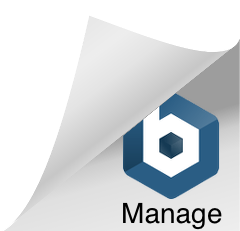What does it mean to be in the Medicaid gap?
Americans who don’t have access to health insurance through their employer have long had to buy individual health insurance plans, provided that they could find one they were eligible for and could afford. Thanks to the protections and subsidies offered by the Affordable Care Act, more than 20 million Americans have gained access to individual health insurance since the ACA went into effect. But there are still millions of Americans without health insurance. One reason is due to a policy-related loophole known as the Medicaid gap.
What is the Medicaid gap?
The Medicaid gap refers to a coverage gap in the United States healthcare system.
Medicaid is set up to offer free or low-cost health insurance for the needy. The Affordable Care Act has subsidies to make individual and family health insurance plans more affordable for the middle class. But there are some people who are not eligible for Medicaid and at the same time not eligible for the ACA subsidies. Thus making both forms of affordable health insurance inaccessible to them. These people are in what is known as the Medicaid gap. According to the Kaiser Family Foundation, there are approximately 2.4 million Americans in this coverage gap.
To understand the Medicaid gap, you have to first understand what happened to Medicaid eligibility when the Affordable Care Act was enacted.
What was Medicaid eligibility like before the ACA?
Medicaid is jointly funded by the federal and state government. States have to follow a set of federal guidelines but can otherwise administer the program per their own rules.
Before the Affordable Care Act, many low-income, uninsured individuals were not eligible for Medicaid. This is because the federal guidelines only guaranteed Medicaid coverage to low-income parents with dependent children, qualifying children and pregnant women, individuals with certain disabilities, and qualifying people over age 65. Some states allowed other groups to qualify, some didn’t.
What does Medicaid expansion mean?
When the Affordable Care Act was passed, one of the provisions was an expansion of Medicaid to include anyone that had a household income of less than 138 percent of the Federal Poverty Level. No longer would you need to fall under one of the qualifying categories; you could qualify for Medicaid based on income alone. The states were to administer the program as in the past but the federal government would pay for the bulk of the expansion costs.
However, a Supreme Court ruling made this expansion optional for states. So while some states expanded Medicaid and extended eligibility to millions based on income alone, other states stuck with the old guidelines of only providing coverage to certain groups of people. As of April 2018, more than 30 states and the District of Columbia have expanded their Medicaid programs, with others considering expansion.
So what does it mean to be in the Medicaid gap? What are my options?
To find out if you qualify for Medicaid, use this HealthCare.gov tool. Using your location, household size, and income, it will tell you whether you qualify for Medicaid or are eligible for either ACA premium tax credits and/or ACA cost-sharing reductions.
Even if you live in a state without Medicaid expansion, you could still be eligible for Medicaid if you have a qualifying characteristic. A few of these include having a disability, being pregnant, or being an extremely low-income parent. The exact factors depend on your state but you can confirm whether you’re eligible by filling out an application for Marketplace insurance.
If you do not qualify for Medicaid and do not qualify for ACA subsidies, then you are in the Medicaid gap. To get health insurance, you would have to pay full price for an ACA Marketplace plan. (You could also buy a private health insurance plan. However, these can be costly and also lack the protections that come with ACA plans.) A more affordable option is to get low-cost care through a community health center. These places typically provide health care services on a sliding scale based on your income. You can find one via this tool from the U.S. Department of Health and Human Services.
Don’t forget that if your income changes during the year, you may become eligible for ACA subsidies. If you do, you’ll also be eligible to enroll in a health insurance plan during a Special Enrollment Period. And it’s important to know that you must apply within 60 days of your income change.













Leave a Comment